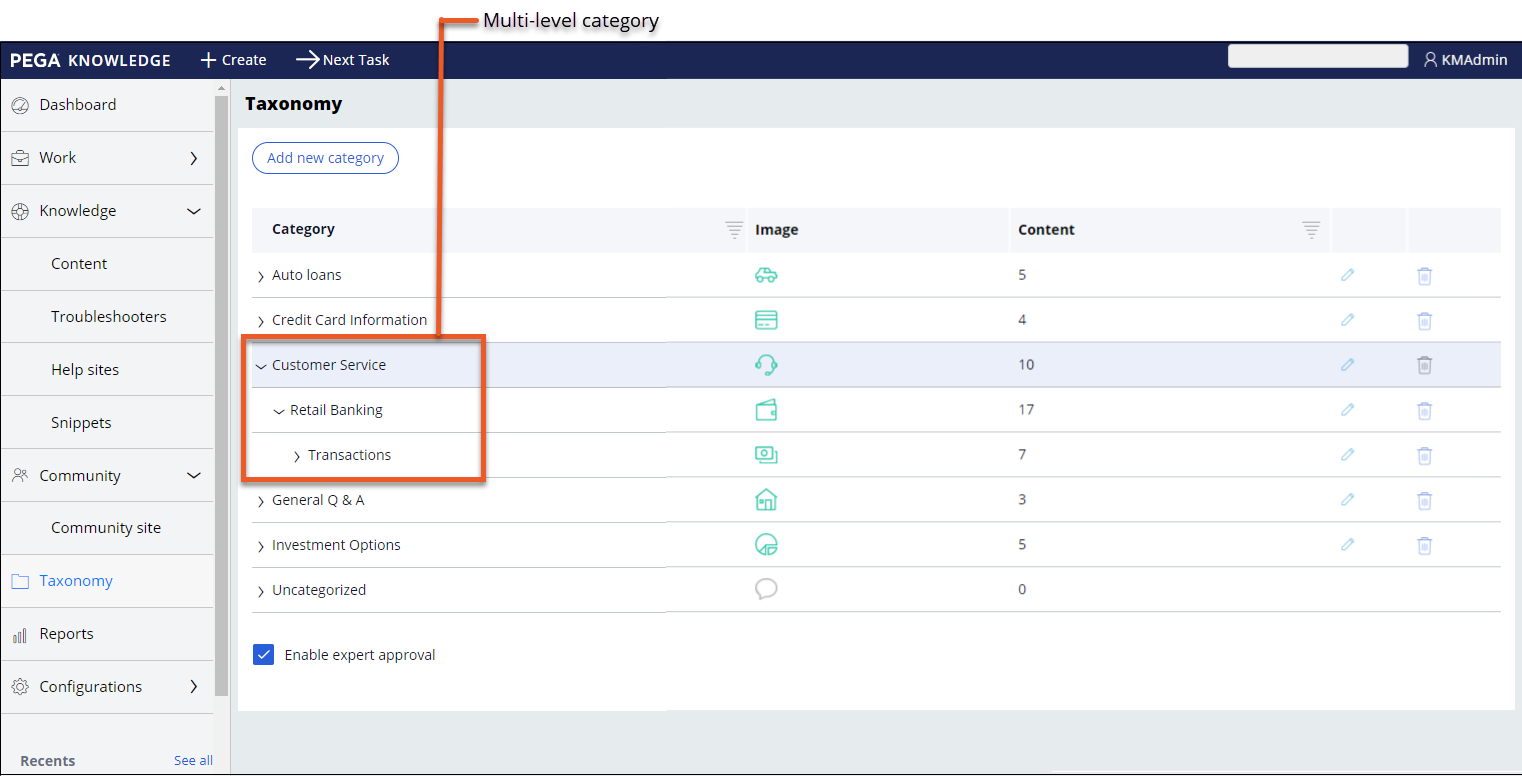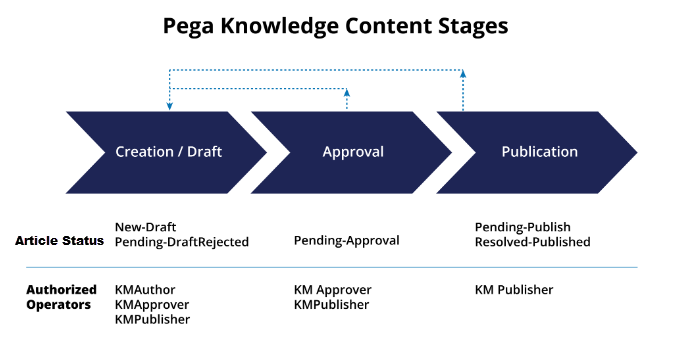Creating content in Pega Knowledge
The authoring team creates and publishes articles in the Pega Knowledge application for Managers to use in the Pega Customer Service application.
Before you begin
Before creating content, create a taxonomy in which to classify or group similar articles. Pega Knowledge includes sample articles and a sample taxonomy for testing purposes. You can create a taxonomy from the ground up, or you can import the sample articles and taxonomy, and then simply edit or delete the taxonomy categories to suit your needs, then archive the sample articles.
Creating a taxonomy
A taxonomy organizes your knowledge base content, making articles easier to find, search for and view. Pega Knowledge supports multiple levels of categories to meet your business needs. Create a taxonomy that aligns with how you want to organize and classify your content.
The Taxonomy page shows an example of a taxonomy structure that includes multilevel categories. For more information on creating a taxonomy, see Taxonomy in the Pega Knowledge User Guide.

Creating content
After creating a taxonomy, the authoring team creates and publishes articles in the Pega Knowledge application. Pega Knowledge supports multimedia content, which enables authors to include graphics, embedded videos, and links. Authors can also specify URLs to content that is stored elsewhere, for example, an internal or external website. Pega Knowledge supports a guided content authoring and approval flow that enables authors to create content in stages that separate approval and publishing. This approach adds quality control into the content development process and maintains visibility for content managers across all content development activities.
For more information on creating and publishing articles in the Pega Knowledge application, see Creating content in the Pega Knowledge User's Guide. You can also watch a video on creating an article, and then linking it to a service case.
The following figure shows the Pega Knowledge content stages and authorized operators for each stage:

Previous topic Pega Knowledge capabilities Next topic Linking Knowledge articles to service cases
